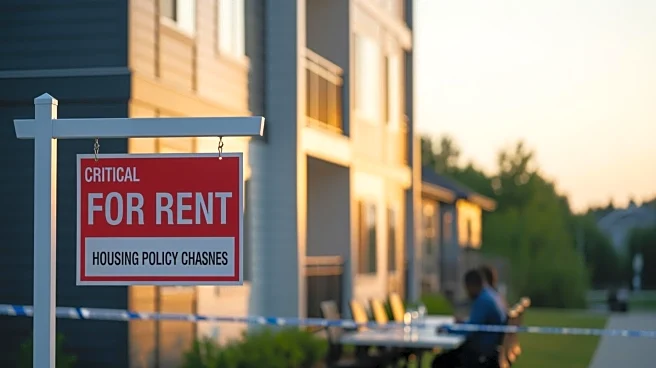What's Happening?
Austin, Texas, has emerged as the most affordable rental market in the United States, according to Realtor.com. This development follows a period of significant growth and migration during the COVID-19
pandemic, which saw major companies like Tesla and Oracle relocate to the city. Despite the influx of high-income residents and a previous spike in rental prices, Austin has managed to reverse the trend through strategic housing policies. The city eased height restrictions, parking mandates, and expedited building permits, leading to the completion of nearly 50,000 new rental units between 2023 and 2024. As a result, the typical asking rent in Austin dropped to $1,411 in September, marking a 7% year-over-year decline.
Why It's Important?
Austin's transformation into the most affordable rental market in the U.S. is significant for several reasons. It highlights the impact of proactive housing policies in managing urban growth and affordability. By increasing the housing supply, Austin has managed to lower rental costs, benefiting both new and existing residents. This shift could serve as a model for other cities facing similar challenges with housing affordability and population growth. The decline in rent prices also makes Austin an attractive destination for individuals and families seeking affordable living options, potentially influencing migration patterns and economic dynamics in the region.
What's Next?
The continued affordability of Austin's rental market may attract more residents and businesses, further boosting the local economy. City officials and developers are likely to continue their efforts to maintain this affordability by exploring additional housing projects and policy adjustments. Other cities may look to Austin's approach as a blueprint for addressing their own housing challenges. The long-term sustainability of these policies will be crucial in ensuring that Austin remains an affordable and desirable place to live.
Beyond the Headlines
Austin's success in managing rental affordability raises important questions about urban planning and the role of government in housing markets. The city's approach underscores the importance of balancing development with community needs and environmental considerations. As more cities face housing crises, the ethical implications of development policies and their impact on diverse populations will become increasingly relevant. Austin's experience may prompt broader discussions on the future of urban living and the responsibilities of policymakers in shaping equitable and sustainable communities.












